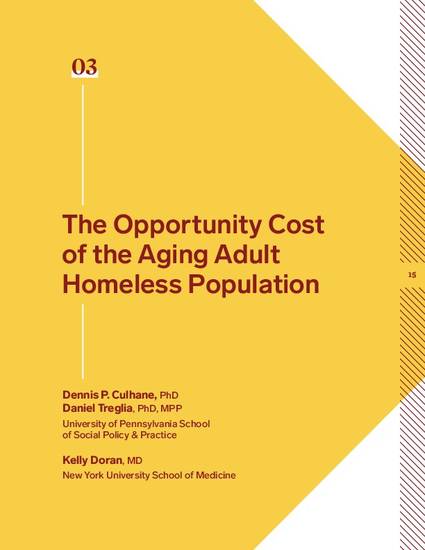
Contribution to Book
The Opportunity Cost of Aging Adult Homelessness
Social Work's Grand Challenge to End Homelessness: Policy Proposals for the 2020 US Presnedential Election
(2020)
Abstract
The homeless population is aging. While the aging of the post-War baby boom population in general might suggest that this is not at all surprising, the age structure of the adult homeless population is distinct. As shown in Figure 1, three decennial censuses have revealed a “cohort effect” among the adult homeless population (Easterlin, 1979). Most of the adult homeless population since 1990, and likely for several years before, is concentrated among the latter half of the post-War baby boom population, born between 1955 and 1965 (Culhane et al., 2013). This has persisted for thirty years, and the 2020 Census will undoubtedly reveal a continuation of that trend. In 2020, the average age in this cohort will be 60 in a population with a life expectancy of 64 (Metraux et al., 2011). This trend has important implications for homelessness assistance programs, which have not in recent history experienced elderly homelessness in significant numbers.
Keywords
- homelessness,
- aging
Disciplines
Publication Date
2020
Editor
D Padgett & BF Henwood
Publisher
American Academy of Social Work and Social Welfare
Citation Information
Dennis P Culhane, Dan Treglia and Kelly Doran. "The Opportunity Cost of Aging Adult Homelessness" Social Work's Grand Challenge to End Homelessness: Policy Proposals for the 2020 US Presnedential Election (2020) p. 15 - 20 Available at: http://works.bepress.com/dennis_culhane/236/
